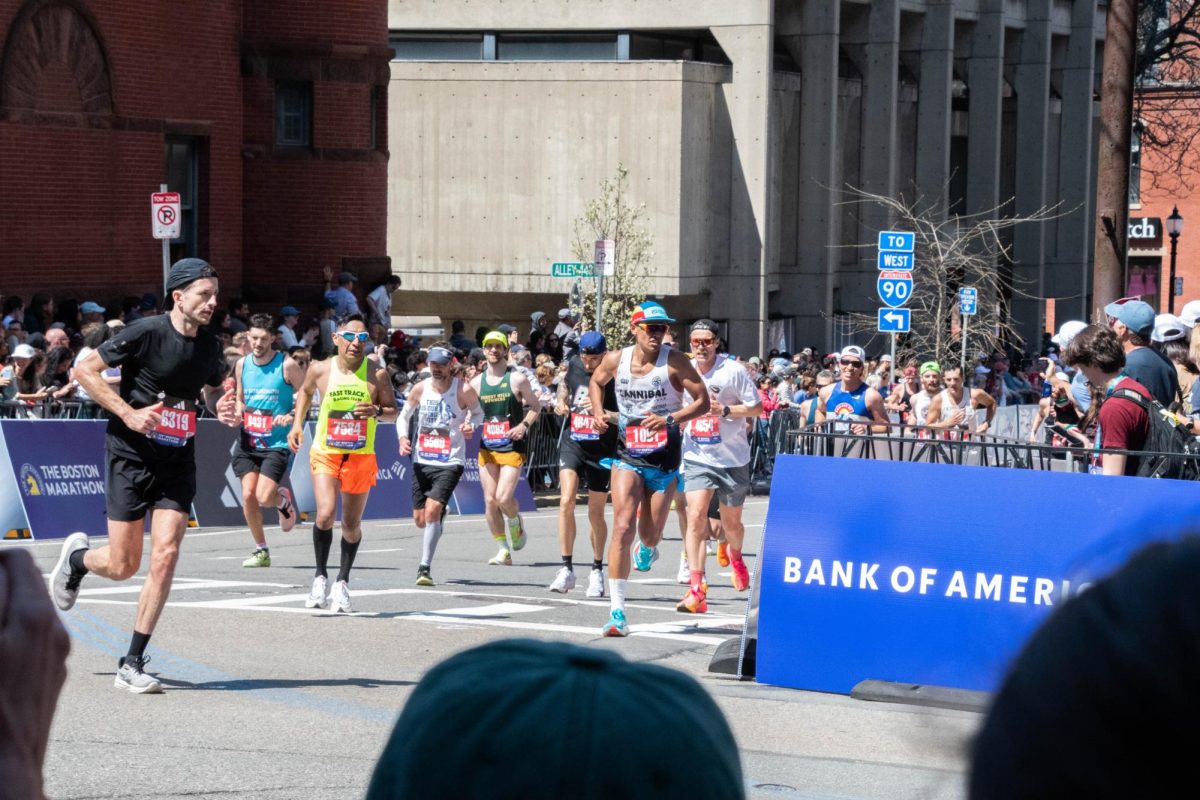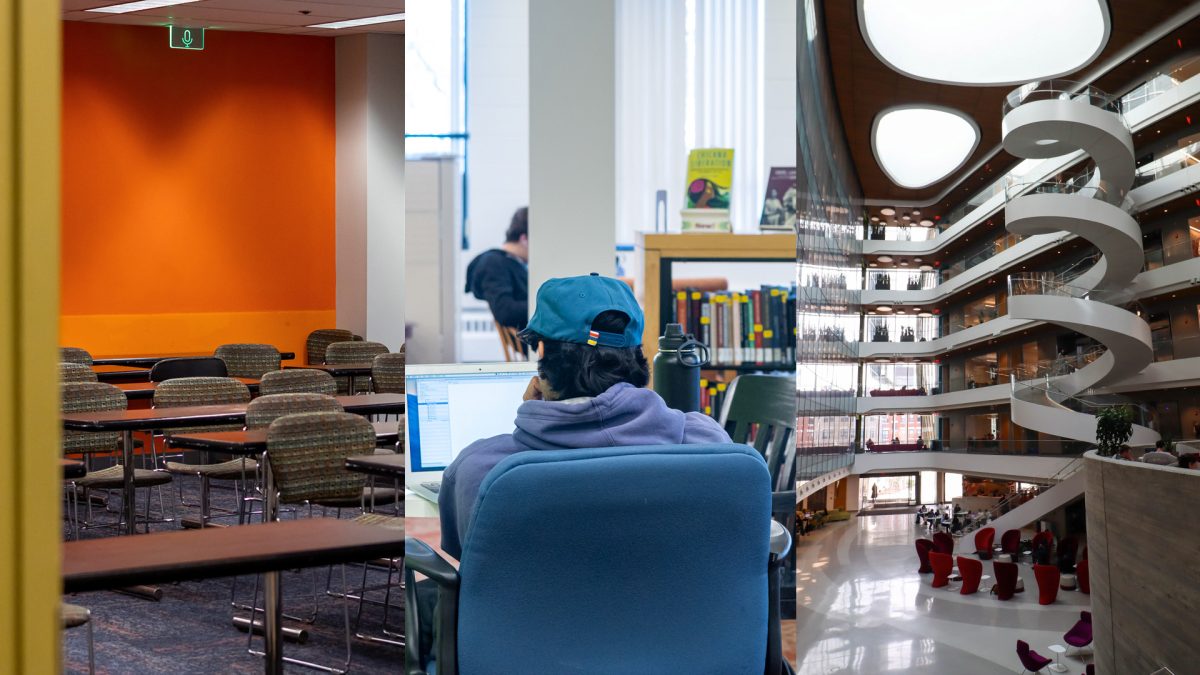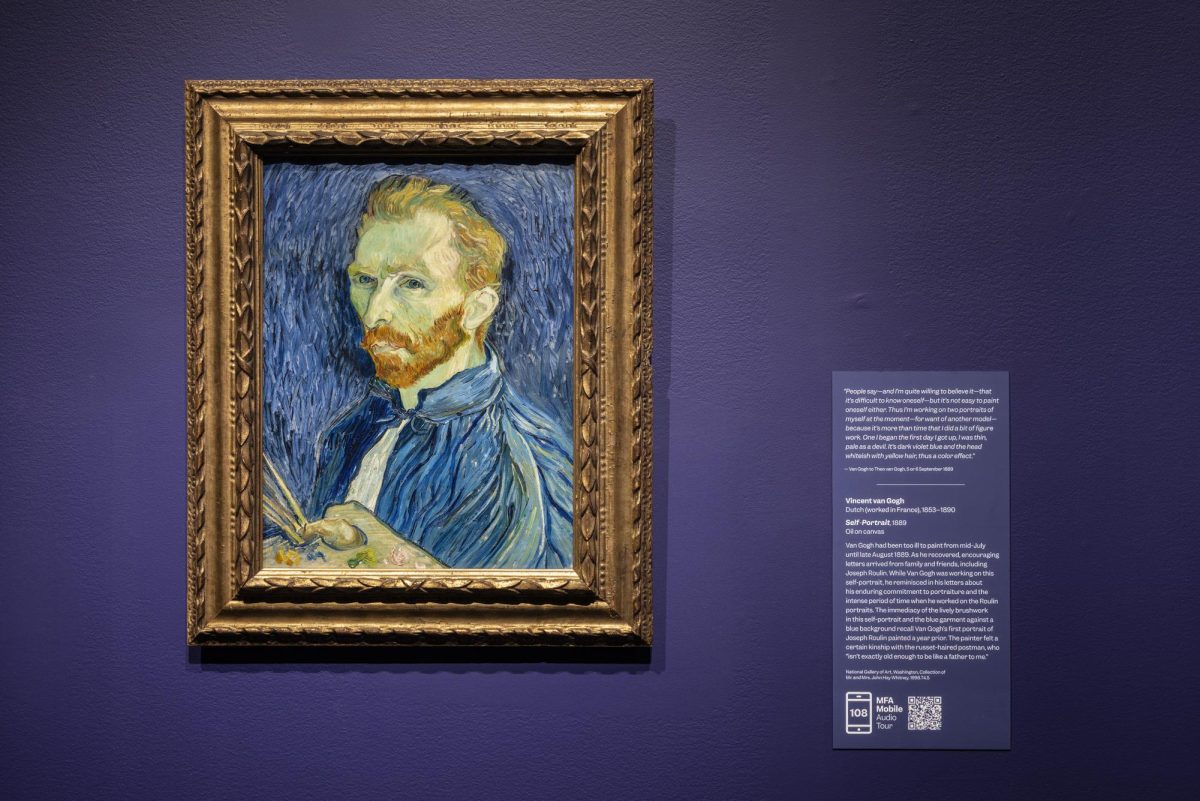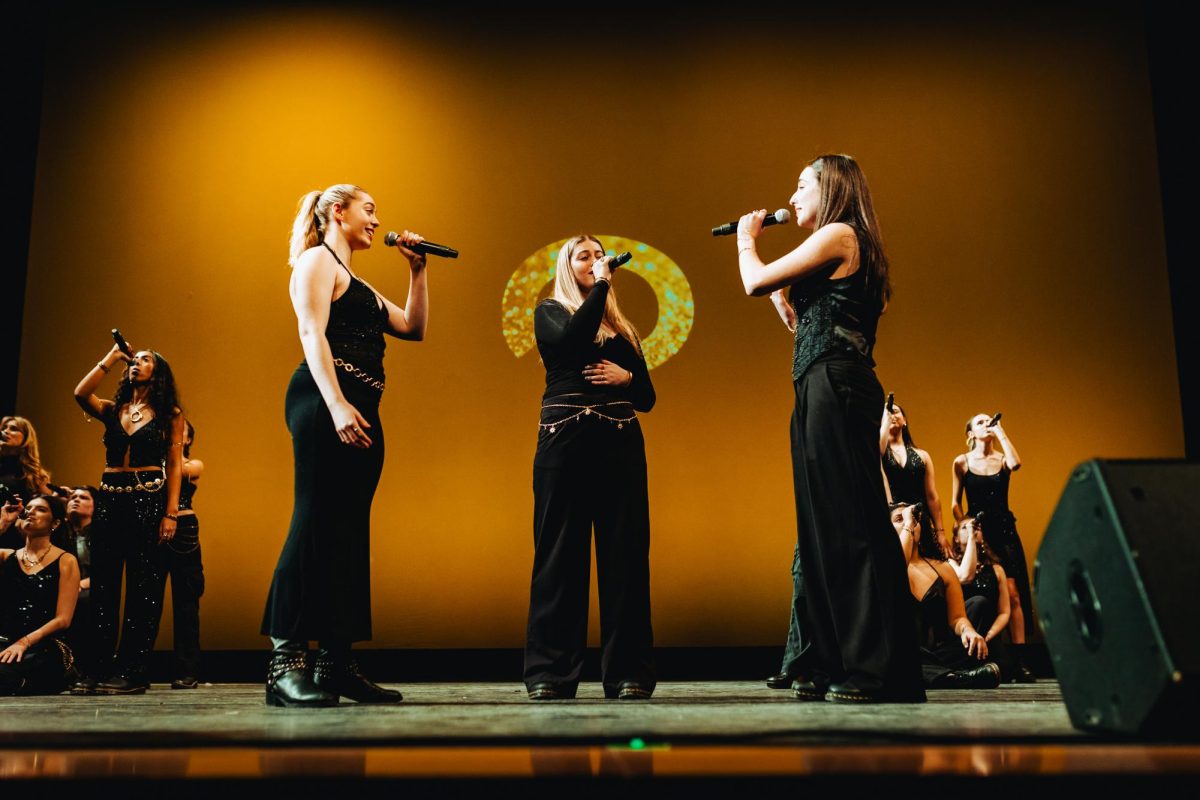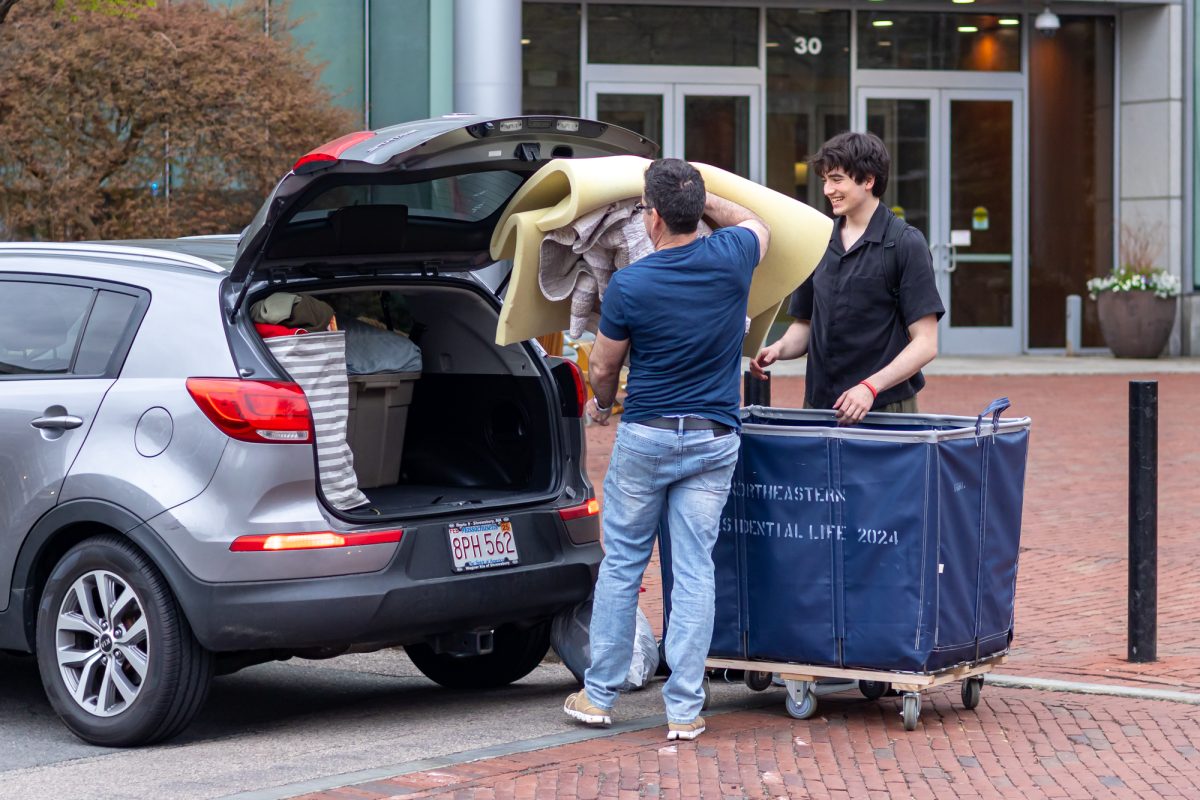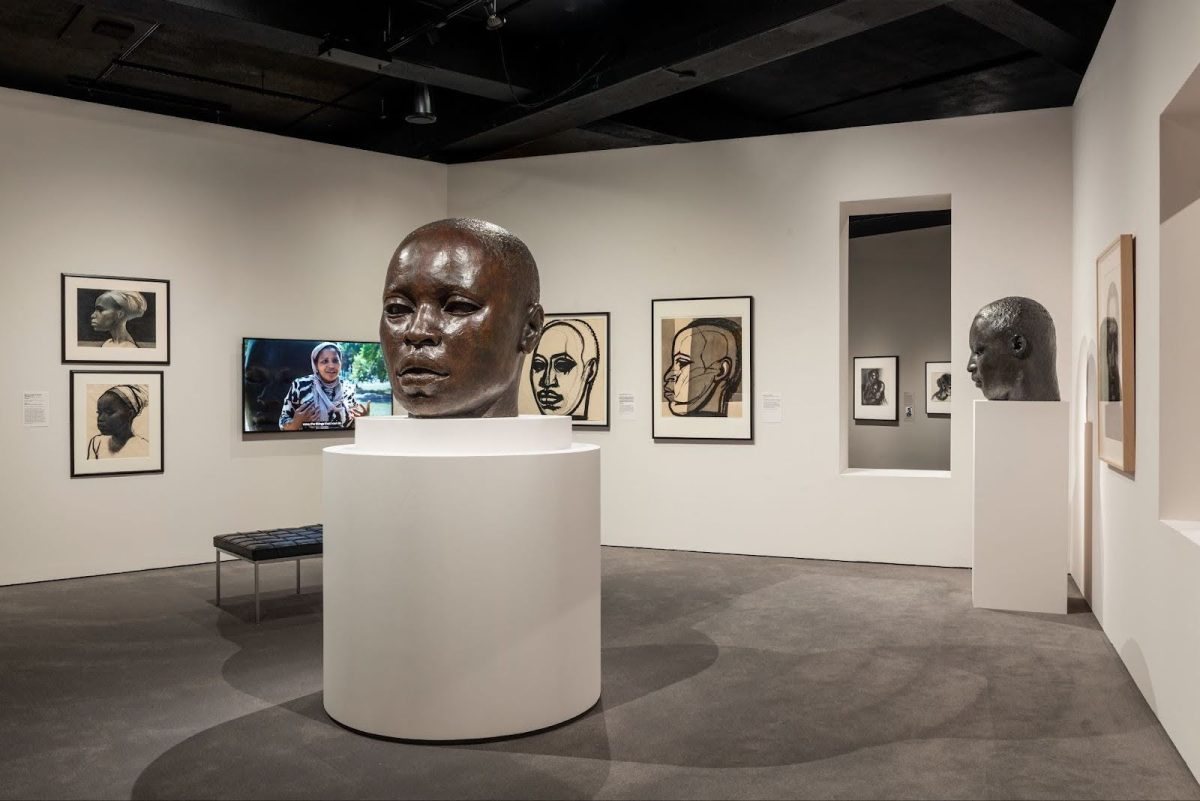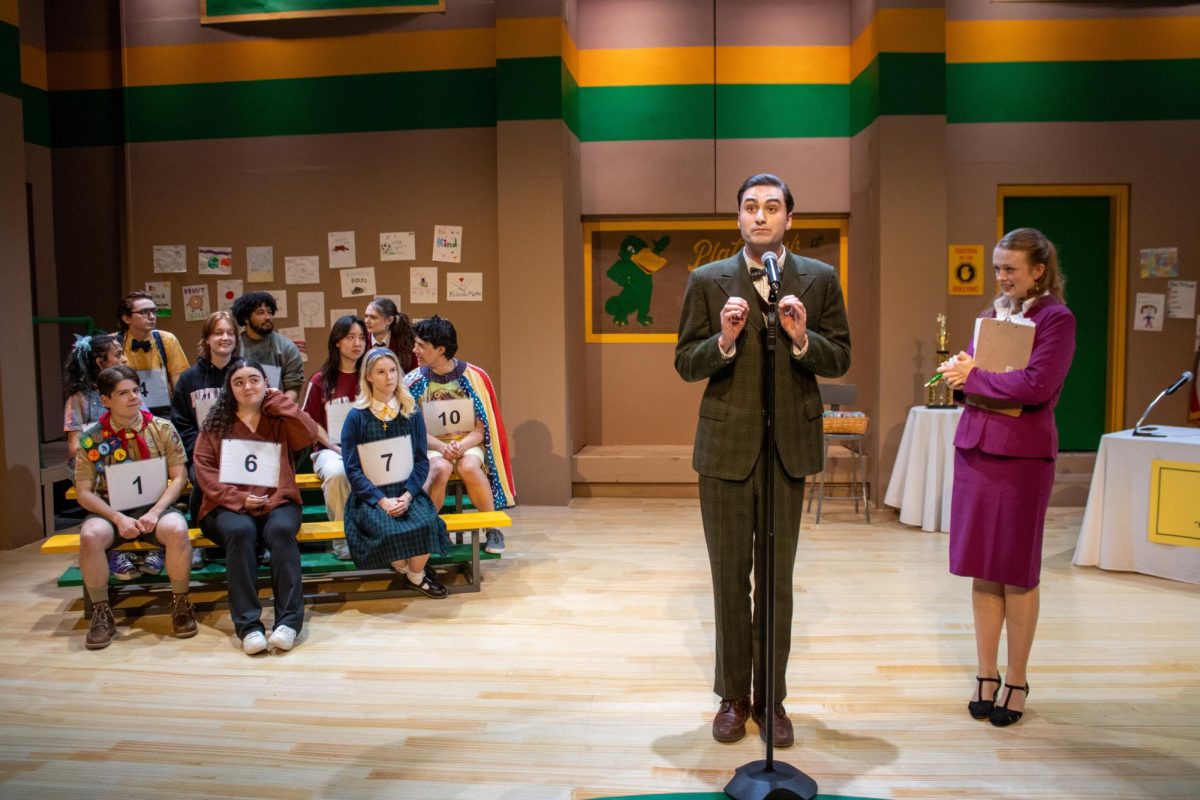On Nov. 2, the most iconic band of the 1960s released its final single. If any band can top the Billboard charts in both 1964 and 2023, it’s the Beatles. The impact of its seemingly endless list of hits spans generations, but how does the new single compare to the rest of its discography?
“Now and Then” is more than just a testament to the band’s legacy — it’s a full-circle moment for John Lennon, Paul McCartney, George Harrison and Ringo Starr, four bandmates who shared experiences unlike anything in the world of music before or after their time.
The story of “Now and Then” starts in 1977, when Lennon recorded several vocal and piano demos in his New York City apartment. Three years later, he was murdered right outside that apartment by Mark David Chapman.
Beatles fans were beyond distraught after hearing of Lennon’s death. All through the 1970s, there were constant talks of a Beatles reunion, but it never came to fruition. Lennon, who had seemingly removed himself from the music business in 1975, rekindled these dreams with the comeback release of 1980’s “Double Fantasy.” The prospect of a Beatles reunion never seemed so real, only for the hopes of millions to be dashed. Lennon was part of one of the most successful songwriting duos in history, the founder of the band and the voice of a generation. Without him, the Beatles could never be the same.
Fourteen years later, a new door was opened. Yoko Ono, Lennon’s widow, gave McCartney two cassette tapes with the demos Lennon recorded. At the time, a retrospective project called “The Beatles Anthology” was in the works. In addition to a documentary and a companion book, three double albums with demos and outtakes were released. The plan was to record a new single for each album using Lennon’s demos as the basis. Two of these singles, “Free as a Bird” and “Real Love,” were released on “Anthology 1” in 1995 and “Anthology 2” in 1996. It would take nearly three decades before the third, “Now and Then,” would be finished.
Because of the lo-fi nature of Lennon’s recordings, the audio that the remaining three Beatles had to work with was far from ideal. The inconsistent clarity of Lennon’s vocals and a disruptive hum throughout the recording made it nearly impossible to salvage the track with the available technology at the time. Additionally, producer Jeff Lynne of Electric Light Orchestra pointed out the incomplete nature of the song itself.
“The song had a chorus but is almost totally lacking in verses,” Lynne said in an interview with BBC earlier this year.
Between the difficulty of preserving Lennon’s vocals and a lack of enthusiasm for finishing the track, particularly from Harrison, it was set aside. The odds of the song ever being revived slimmed further with Harrison’s death in 2001.
For years afterward, McCartney mulled over finding a way to finish the single, occasionally mentioning his desire to come back to it in interviews. After the release of the three-part documentary “The Beatles: Get Back” in 2021, it seemed the right moment had finally arrived. Director Peter Jackson and other crew members in the documentary had developed audio isolation technology that allowed them to split audio tracks into individual components using machine learning. The technology made it possible to separate voices and instruments, giving them a clearer sound than ever before. Once McCartney saw what this technology could do, he saw an opportunity to use it for “Now and Then.”
In the months leading up to the single’s release, worries began to take shape when McCartney revealed to BBC Radio 4 that artificial intelligence was used to “extricate” Lennon’s vocals. Given all the current controversy surrounding the use of AI in music, some fans were left with the misconception that the song would be using AI to replicate Lennon’s voice. McCartney later clarified the following week, however, that the AI was simply being used to help isolate Lennon’s vocals from the piano.
The song starts with a count-off by McCartney before leading into a somber piano intro based on Lennon’s original demo. As many fans have pointed out, the softer and slower count off of “One, two, three” directly contrasts with the energetic “One, two, three, four!” that starts off “I Saw Her Standing There,” the first track on the Beatles’ debut studio album “Please Please Me.” This intro sets the tone for the rest of the song, which is surprisingly melancholy throughout.
When compared to Lennon’s demo, there was a clear effort to somewhat rework the song, which included the removal of a verse and the addition of a slide guitar solo. The solo, written and performed by McCartney, is played in Harrison’s signature style as a tribute to his old bandmate. Echoes of the Beatles’ 1960s reign can also be heard in backup vocals repurposed from “Because” from 1969’s “Abbey Road” and “Eleanor Rigby” and “Here, There and Everywhere” from 1966’s “Revolver.” More information on how the song was reworked from several angles can be found in the official mini-documentary, released Nov. 1.
The lyrics of “Now and Then,” though simple and vague, fit the theme of reaching the end of a long journey. The ambiguity of the chorus, especially, has allowed it to take on an unintentional double meaning that works to its advantage: “Now and then / I miss you / Oh, now and then / I want you to be there for me / Always to return to me.” While these lyrics were originally written to be speaking to a lover, they could just as easily be directed at a lifelong friend. The way the music swells and momentarily becomes more uplifting at the chorus seems to acknowledge this. The melancholy of “Now and Then” comes from missing the people that populate one’s happiest memories, but it’s balanced with a gratitude that those memories were made at all.
“Now and Then” also received physical releases as a 7-inch and 12-inch vinyl single, as well as on cassette and CD. The track was released as a double A-side single with a new 2023 mix of “Love Me Do,” the Beatles’ debut single in the United Kingdom. By pairing their first and last singles together, the release feels like an appropriate bookend for the Beatles’ legacy.
To further commemorate the release of “Now and Then,” expanded and remixed versions of “The Beatles 1962-1966” and “The Beatles 1967-1970” were released Nov. 10. Commonly referred to by fans as the “red” and “blue” albums, the new versions of these 1973 compilation albums included several Beatles classics that were left out on the original releases along with new mixes of over 30 tracks.
These mixes were made possible by the same audio isolation technology used for “Now and Then,” resulting in the clearest and crispest stereo versions of these songs yet. “1967-70” now also includes “Now and Then” as its final track, giving a further feeling of completeness to these compilations. “1962-66” and “1967-70” also received LP and CD releases.
As a song itself, “Now and Then” unfortunately doesn’t match the impossibly high standards set by dozens of Beatles classics. It pales in comparison even to other Beatles songs of a similar subject matter — see Lennon’s “In My Life” or McCartney’s “The Long and Winding Road.”
Despite this, the song doesn’t feel like it was trying to compare to the band’s original output in the 1960s. What’s more important is that “Now and Then” fulfills its specific role: providing a satisfying conclusion to its discography, and, in that regard, it succeeds. It’s maybe more moody than one might expect for the Beatles’ last word, but it’s nevertheless a thoughtful final chapter for its legacy.







